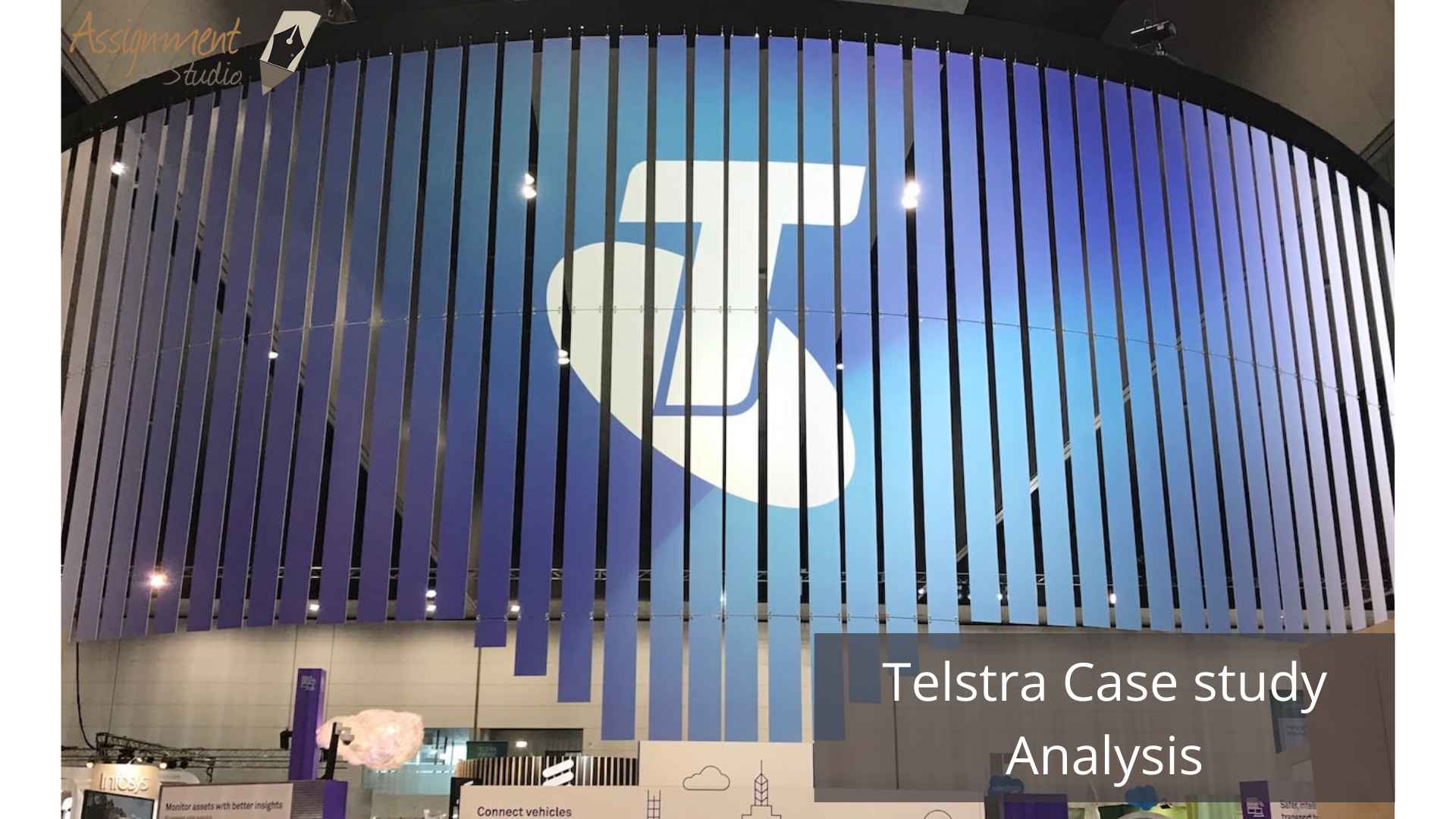Telstra Case study Analysis
1. Abstract
In this rapidly changing world, technology is becoming imperative in maintaining quality of business processes consistent with the organizational goal. In this context, information system (IS) and information technology (IT) are fast evolving as major differentiators for a firm with respect to its fulfilling business strategies, providing strategic direction, developing competitive edge with superior delivery and managing human resource.
Based on the research topic, we have interviewed two Australian market leaders, Telstra and Revolution IT, operating in telecom and software business respectively. The level of IS efficiency in these firms can set the tone for the industry trends in Australia. However, the study will also highlight the extent of IS need in corporate planning as the organizations taken in the study are general benchmarks for the other firms in the business.
The increasing need for a sound IS planning is pinned on the concept of integrating IS and IT solutions with the business expectation of the organizational leadership and stakeholders. It is found out in the study that IS application improves the company performance to a sizeable magnitude, leading to higher investment in IS and IT by the market leaders that impose entry barriers for the small companies signifying unethical practice in terms of developing monopolistic or oligopolistic industry set up. However, technological advances will improve the market place on both counts: the entities using IS can optimize their quality and achieve targets, while the consumers will get better deals and improved delivery to their satisfaction.

2. Introduction
The study is based on the effectiveness of information system to help achieve organizational objective and business expectation of a firm. In conformity with modern IT management, the information system is integrated with the corporate goals, where information system and information technology is largely seen as key techniques of differentiation in terms of service quality, product quality, logistics, transactional architecture and marketing. Use of technology effectively through innovation is becoming pre-requisite for companies in improving efficiency, a key criterion to make difference between the market leaders/high growth firms and the laggards.
In this study, we will compare two companies viz. Telstra and Revolution IT in terms of their IS in planning, driving competitive advantage and human resource management.
3. Organisation background
Telstra
Telstra Corporation Limited (ASX:TLS) is one of the leading telecommunication and information service company in Australia. Easily one of the best Australian brands, Telstra has gone from strength to strength, being a poorly run government entity till early nineties to one of the best providers of quality products and services in the sectors it serves.
The organization has the privilege of providing network services and solutions to over 200 of the world’s top 500 companies. They target to do business across 240 countries by generating greater productivity, efficiency and growth. Telstra solutions offer the highly skilled people along with a rich portfolio of products and services delivered on world-class Telstra Next IP™ network and Next G™ network. The networks are monitored and maintained with advanced management and operational systems ensuring high degree of service quality meant for their stakeholders and particularly for their customers. Their services are supported by Telstra Enterprise-grade Customer Service™ and one of Australia’s largest and highly skilled technical workforces.
Business Name: Telecommunication and Media
Location: Level 41 – Telstra Centre, 242 Exhibition Street, MELBOURNE, VIC, AUSTRALIA, 3000
Person Interviewed:
Size of IT Department: Telstra Operations is responsible for all aspects of the design, engineering, architecture, construction, and operation of Telstra networks, technology and information technology, plus the delivery of customer services across those networks. The group’s portfolio also includes:
- identifying emerging technologies and representing Telstra in the setting of industry technology standards
- the build, augmentation, integration and cutover of communication networks and systems
- provision and support of IT infrastructure, architecture and applications, and IT business integration to all Telstra lines of business
- design, build and management of data centres to support cloud computing and data hosting services for Telstra lines of business and Telstra customers
- operation of Telstra’s network platforms, internet-based products and services and customer networks and devices
- activation and fault repair of all customer services across Australia
- delivery of network-centric professional services, managed services and outsourcing services for enterprise and government customers
URL: http://www.telstra.com.au/
Screen Dump:
Revolution IT
With a vision to be the best Application Lifecycle Management consultancy in Asia Pacific, the Revolution IT aims at delivering the best service to its customers through the best people, processes and tools. The organization strives for collaboration (to work together in producing exceptional outcomes), high performance (delivering with urgency and excellence), integrity (following honest, ethical and trustworthy practice) and being passionate towards the work they do.
Revolution IT aims for excellence in their service quality. From planning through to operations right methodologies are used to reduce IT costs, meet aggressive timelines and deliver outstanding application quality. They claim to deliver what their clients need most from their IT investments: compelling strategic and operational results.
Person Interviewed:
Business Name: Software and IT Solutions
Location: MELBOURNE (Head Office), Level 7, 170 Queen Street, Melbourne VIC 3000
Size of IT department: 230 people
URL: http://www.revolutionit.com.au/
Screen Dump
4. IS Planning
The two organizations interviewed responded well to our questionnaire showing interest and involvement in the research. This indicates the importance they have attached to the topic which is the own area of focus for them.
However, Revolution IT didn’t respond to the issue of Human Resource Management for their IS functions.
- Topic1 – IS Planning Literature Review
The Australian market place, consistent with the global trends, increasingly needs information as an agent of integration and the enabler to improve competitiveness of an entity. For long, information system was largely separate from the corporate strategies, attracting little interest for the top management It was considered as a supporting tool of backroom operations with a scope limited to just assisting the mundane day-to-day tasks (Rockart 1979). However with growing realization of integrating the information system with strategic planning in 1980s and 1990s, IS planning/strategy has emerged as an integral part of the overall company planning and development.
Identifying a need is starting point of planning an information system. The effectiveness of a computer based system depends how well it is responding to a need. The need can vary from being at the transaction processing level or at a more complex information and support system level.
Modern IS planning is similar to the management strategic planning. Identifying and formalizing the information objectives, priorities, and authorization forms the basis of IS planning framework in an entity. In developing IS, the plan must include the scope and prospect of its future application, the priorities with respect to resources, procedures and constraints for each area of application and for each project. The flexibility of the plan is an important factor for a company’s competitive advantage (King 1995). According to King, the strategic capability architecture, which is a flexible and improving infrastructure of organizational capabilities is the key embedded factor for sustainable competitive advantage.
In our study, we will focus on strategic information systems planning (SISP), which is the analysis of a company’s information and processes that includes evaluation of risks, needs and current requirements. By using business information models, SISP aims at providing strategic direction that requires the alignment with information use and needs of the company (Battaglia 1991). The article also describes SISP as a management function rather than a technical one. Thus SISP is an important feature of a company’s IS planning needs that help the organization maximize its return on information technology investment.
While, SISP is a strategic management model providing strategic direction of an entity in integrating its strategic IS planning with the corporate objective, SDCL (Software Development Lifecycle) will assist the Project Manager and Business Analysts on the consistent execution of the projects by reducing the risks associated with it. The information contained in the methodology should be adoptive to the uniqueness of each project and explains a unique solution for each of them.
Charvat’s Matrix (Charvat 2003) is a project management methodology (based on time and complexity of a project) and an important guideline to determine the structure for a project. For managing IS projects, the University of Waterloo Project Management (PM) Lifecycle Methodology is an appropriate guideline for PM, although it vary considerably depending on the project size, complexity and timeline. This methodology processes are also in concert with the external vendors.
The five step process is illustrated below.
- Initiation: process of defining and authorization of project as the starting point of the project.
- High Level Project Planning: establishing objective, scope and course of action.
- Detailed Project Planning: determining and focusing on the course of action and high level project planning for small projects.
- Execution and Control: completion of the work, tracking and regulating performance along with recommendation for improvement.
- Closure: closing the project after carefully finalizing all activities across all groups involved in the process.

Hire Expert Writers at
Affordable Price
WhatsApp
Get Assignment Help
By analysing the standard methodologies of SISP and comparing them with interview results, we will find out the effectiveness of IS planning in alignment with their strategic planning for both organizations.
One of the first strategic IS model evolved was in 1960s known as three-era model of John Ward, et al (1990). The model is based on three distinct yet overlapping areas of information system viz. (a) Data Processing (DP), (b) Management Information Systems (MIS) and (c) Strategic Information Systems (SIS). (Ref: Appendix1).
However, the model considers the relationship among systems rather than with business success.
Later on, a portfolio model derived by McFarlan (1984), takes into account the contribution of IS/IT to the current as well as future business on the basis of its industry impact. According to this model, applications are divided into four categories viz. strategic, turnaround, factory and support. The strategic applications are vital to future success, turnaround applications are useful for the future and factory applications are critical for business sustenance and support applications are important but not critical to business. (Ref: Appendix2)
In Telstra, information technology is used to support all technology activities for internally supporting the company. The technology activities are related to setting and implementing the strategic direction for internal technology apart from planning, developing, implementing, operating and supporting all technology infrastructure, systems, applications and integrating IT strategy with the standards set by the company (The way we work – Telstra Business Principles, n.d.).
Moreover, Telstra’s business priorities are concentrated on customer satisfaction as reflected in their focus on developing an industry best communication system including an end-to-end business communication package. An extensive IT/IS planning has gone underway in the functional area of providing better communication in (1) making better tools of communication, (2) building a sound network (3) CRM (4) technical support and (5) quality assurance (Telstra Business Systems, n.d.).
The IT model of ‘Revolution IT’ is based on the three strategic objectives of the firm, (a) Innovation, (b) creating benefits for clients with the help of flexible IT strategy, and (c) acquiring talent (Revolution IT 2013).
Although the tactical plan for the two organizations is different, the strategic direction and the embedded essence of the corporate value have striking similarity. Both are customer centric and use IT to maximize the efficiency of their services by ensuring high value and satisfaction for their stakeholders.



